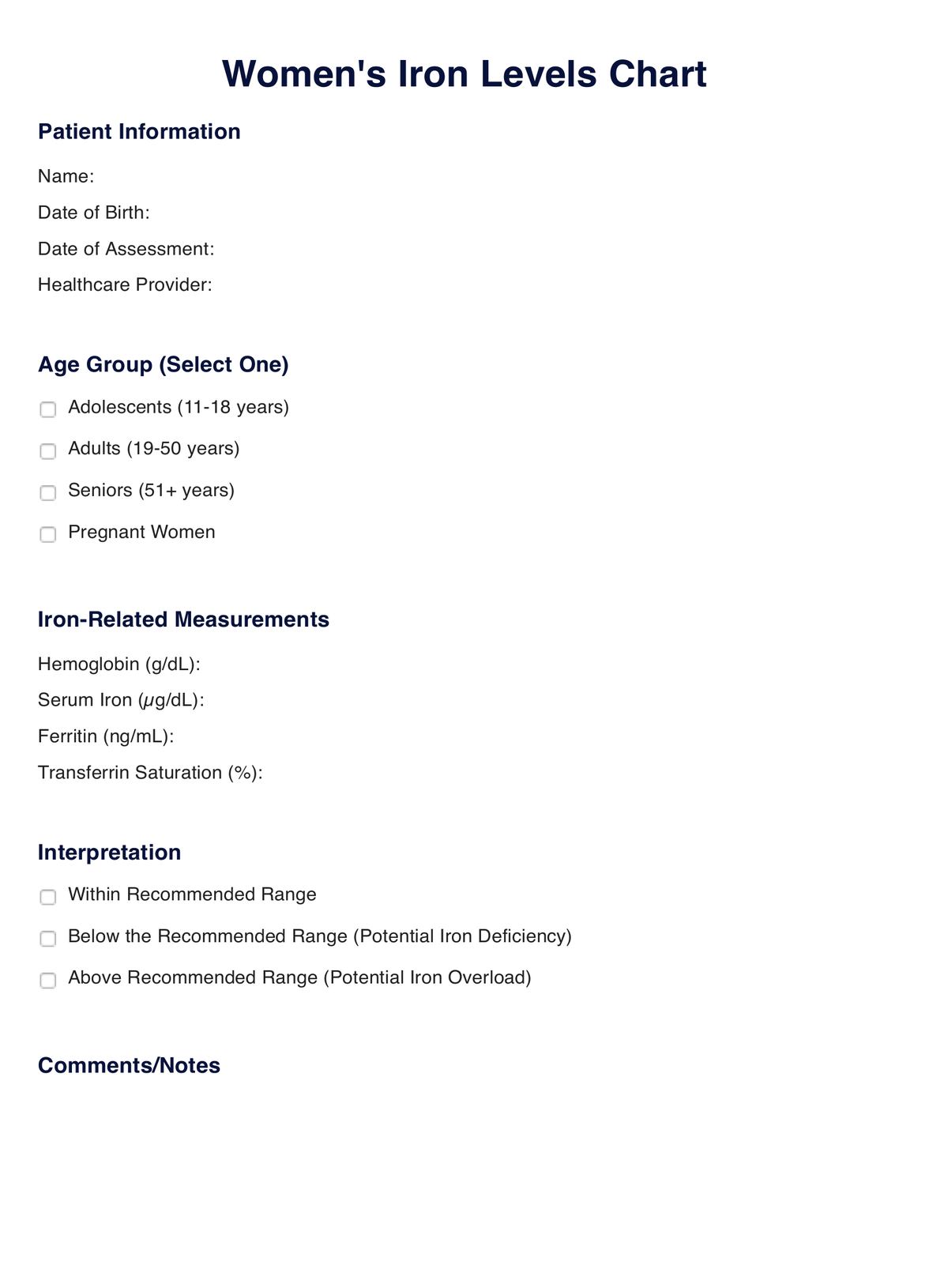Healthcare practitioners, including primary care physicians, gynecologists, and hematologists, often request Women's Iron Level Charts for their female patients. Women themselves may also ask these charts for self-monitoring.

Women's Iron Levels
Track and manage iron levels with our Women's Iron Levels Chart. Easily assess and monitor, promoting optimal female health.
Use Template
Women's Iron Levels Template
Commonly asked questions
Women's Iron Level Charts are used during annual check-ups, prenatal care, menstrual cycles, adolescence, special diets or athletic pursuits, and for those with iron-related health conditions.
Individuals or healthcare providers enter iron-related data (e.g., hemoglobin levels, serum iron, ferritin) into the chart to assess and monitor iron status. Results are then interpreted to determine if iron levels are within recommended ranges or need attention.
EHR and practice management software
Get started for free
*No credit card required
Free
$0/usd
Unlimited clients
Telehealth
1GB of storage
Client portal text
Automated billing and online payments











